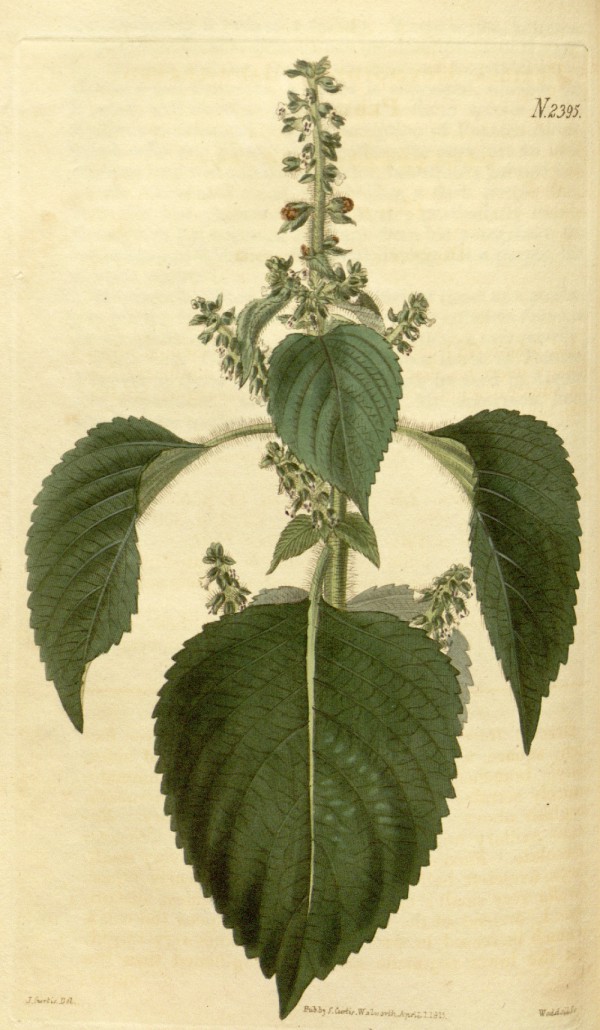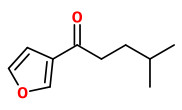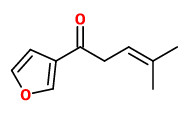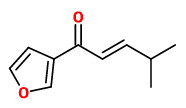Perilla frutescens (L.) Britton - syn.Perilla ocymoides L. - Lamiaceae
紫苏 zi su (chin.), wild sesame, shiso, kkaennip, egoma, beefsteak plant, yegoma oil plant, purple mint, Perilla, Shiso, Schwarznessel, Sesamblatt
Annual aromatic herb, 0.3-2 m tall, cultivated in Asia; leaves broadly ovate to circular, serrate, green, purplish, or purple-black; flowers white.
http://www.efloras.org/florataxon.aspx?flora_id=2&taxon_id=200019964
„It is the species identification encompassing two distinct varieties of traditional crop in East Asia:
P. frutescens var. crispa the aromatic leafy herb, … P. frutescens var. frutescens, the oilseed crop, source of perilla oil.“
Perilla Oil extracted from P. frutescens seeds is added to meal for seasoning.
http://en.wikipedia.org/wiki/Perilla_frutescens
„Korean cuisine uses green leaves of the oilseed variety, which have a flavor different from shiso, and also uses the perilla seeds, known as „wild sesame“, a source of perilla oil rich in ALA omega-3 fatty acids.“
http://en.wikipedia.org/wiki/Perilla
leaves
„…essential oil … of the leaf … It is known that agreeable aromatic smell largely depends on the presence of a cyclic monoterpenoid, perillaaldehyde (4-isopropenyl-1-cyclohexene-1-carboxaldehyde, spicy cumin-like), which occupies a large part of the essential oil. However, there are chemical varieties of this species which do not have perillaaldehyde but either a monoterpenoid with a disagreeable smell or phenylpropanoid as the main oil component …“
[Perilla: The Genus Perilla. He-ci Yu, Kenichi Kosuna, Megumi Haga, CRC Press, 1997]
„…Korean perilla (Perilla frutescens Britton) leaf were extracted … Thirty-three volatile compounds were identified by GC-MS. 1-(3-Furyl)-4-methyl-1-pentanone (perilla ketone) was found to be the most abundant volatile compound, followed in order by (Z)-3-hexenol and 1-octen-3-ol. Perilla ketone comprised 81% (93 ppm), 84% (120 ppm), and 95% (490 ppm) of the volatile compounds obtained from SAFE, LLCE, and HD, respectively. Thirteen aroma-active compounds were detected by GC-O. Perilla ketone, 1-(3-furyl)-4-methyl-3-penten-1-one (egoma ketone), and 1-(3-furyl)-4-methyl-2-penten-1-one (isoegoma ketone) were considered to be the characteristic aroma-active compounds of Korean perilla leaf. Perilla ketone, (Z)-3-hexenal (green), egoma ketone, and isoegoma ketone were the most intense aroma-active compounds in Korean perilla leaf. Other relatively intense odorants included (Z)-3-hexenol (green), (E)-2-hexenal (green), benzaldehyde (almond), 1-octen-3-one (metallic), 1-octen-3-ol (mushroom), phenylacetaldehyde (honeysuckle), linalool (lemon), and β-caryophyllene (woody).“
[Characteristic Aroma-Active Compounds of Korean Perilla (Perilla frutescens Britton) Leaf. Won Ho Seo and Hyung Hee Baek, J. Agric. Food Chem., 2009, 57 (24), pp 11537–11542]
„The name beefsteak plant is probably derived from the bloody purple-red color of the leaves of many forms… We cannot recommend most forms of beefsteak plant for culinary applications. Perilla frutescens has no GRAS status and many forms are rich in perilla ketone, a chemical shown to be a potent lung toxin and documented to produce acute pulmory edema in sheep, atypical interstitial pneumonia and acute pulmonrary emphysema and edema in cattle, and restricitve lung disease in horses.“
[The encyclopedia of herbs: a comprehensive reference to herbs of flavor and fragrance., DeBaggio, T., Tucker, A.O., Timber Press, 2009, 389] lit.cit.:
[Kerr, L. A. (1983). Perilla frutescens toxicity in cattle (Doctoral dissertation, Oklahoma State University).] https://shareok.org/bitstream/handle/11244/16337/Thesis-1983-K403p.pdf
„…the main chemotypes of Chinese producing Perilla are PA type (mainly containing Perilla aldehyde and limonene), PK type (mainly containing perillaketone) and PP type (subdivided as PP-a type, with apiole as its main component; PP-m type, with myristicin as its main component; PP-e type, with elemicin as main component; PP-as type, with asarone as main component).“
[Wei, C. L., and B. L. Guo. „Advances in research of volatile oil and its different chemotypes in leaves of Perilla frutescens.“ Zhongguo Zhong yao za zhi= Zhongguo Zhongyao Zazhi= China Journal of Chinese Materia Medica 40.15 (2015): 2937-2944]
seed oil
„Roasted perilla seed oils (RPSO) are widely used as condiment oils in Asian countries, especially in Korea and China, because of their roasted, nutty, and distinctive aromas, reminiscent of perilla aldehyde. Similar to sesame seed oils, RPSO are traditionally tailor-made by roasting, mechanical pressing, and simple refining from the raw perilla seeds… Oils from parilla seeds roasted below 170°C had relatively high concentrations of aldehydes, whereas pyrazines and furans were the predominant volatiles above 170°C. In all of the RPSO, the contents of both perilla aldehyde and perilla ketone remained almost constant and might be used to discriminate perilla seed oils from other roasted vegetable seed oils…“
2-Methyl pyrazine and 2,5-dimethyl pyrazine are major contributors to the roasted flavor of sesame seed paste and also present in RPSO. 2-methyl pyrazine and 2,5(6)-dimethyl pyrazine represented about 70% of the total amount of pyrazines detected in RPSO180.
[Kim, Suk Ju, Hee Nam Yoon, and Joon Shick Rhee. „The effects of roasting temperatures on the formation of headspace volatile compounds in perilla seed oil.“ Journal of the American Oil Chemists' Society 77.4 (2000): 451-456]
„Perilla leaf oil is listed among generally regarded as safe (GRAS) food flavorings for use in baked goods, beverages, frozen dairy products, puddings, and processed vegetables and soups (Smith et al., 2001). The bright green leaves of P. frutescens var. crispa f. viridis (green perilla, green shiso) are described as having a cinnamon-like odor and a taste reminiscent of ginger (Tian et al., 2014). Perilla frutescens var. crispa f. purpurea Makino (red perilla, red shiso), with reddish-purple leaves having a strong aroma and flavor, is used to add color and flavor to pickled ume plums, ginger root, and Chinese artichoke tubers (Tian et al., 2014). “Ma-Nga-Chan” (P. frutescens var. frutescens) and “Hom Heuat” (P. frutescens var. crispa) are common names for perilla in Laos (Ito et al., 2008). “Hom Heuat” is generally used in a popular noodle soup called “Phoo” in Vietnam and Laos, and “Ma-Nga-Chan” is commonly mixed into a sticky rice dish called “Cao-Tom” in Laos and Thailand (Ito et al., 2008). “Zisu” (red perilla) and “Baisu” (green perilla) are widely used in China for flavoring and food agents (Huang et al., 2011). “Egoma” (P. frutescens var. frutescens) and “Shiso” (P. frutescens var. crispa) are also common culinary herbs in Japanese cuisine and “Shiso” tea is one of the teas commonly consumed in Japan (Kiski et al., 2010). Kishi et al. found that “Shiso” tea decelerated the development of diabetes mellitus in rats (Kiski et al., 2010). Perilla seeds and leaves are known as “Bhanjira” in India where the seeds are used as flavoring agents in Indian cuisine (Chauhan et al., 2013).“
„In biting deterrent bioassays, biting deterrence index (BDI) values for compounds methyl perillate (0.73), perillic acid (0.71), perilla alcohol (0.69), perilla aldehyde (0.62), caryophyllene oxide (0.60), and limonene (0.52) indicated good biting deterrent activity but the activity was significantly lower (proportion not biting (PNB) value 0.84) than the positive control N,N-diethyl-3-methylbenzamide (DEET) at 25 nmol/cm2. In larval bioassays, methyl perillate was the most toxic compound with LC50 of 16.0 ppm. Methyl perillate was the most active compound against A. aegypti larvae and this compound may offer a new biodegradable mosquito control agent.“
[Tabanca, Nurhayat, et al. „Essential oils of green and red Perilla frutescens as potential sources of compounds for mosquito management.“ Industrial Crops and Products 65 (2015): 36-44]

Curtis’s Botanical Magazine, vol.50 t.2395 (1823)
http://plantillustrations.org/species.php?id_species=769250
Perilla frutescens © Rolf Marschner (2010), http://botanische-spaziergaenge.at/viewtopic.php?f=95&t=2157



